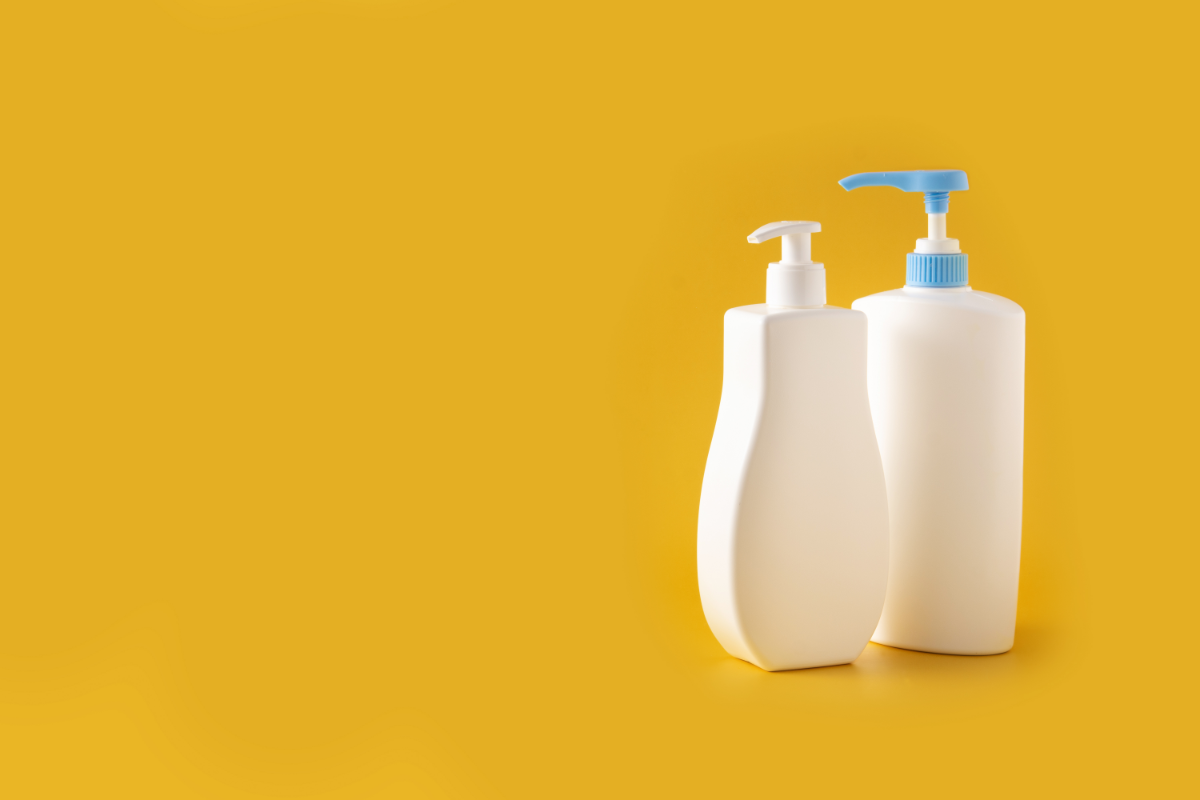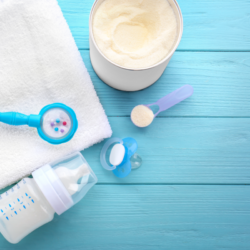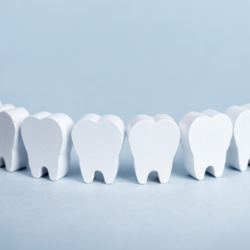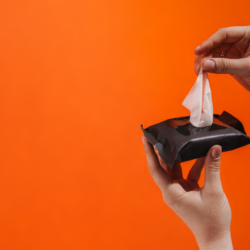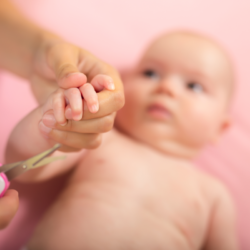Many parents are concerned about the wide range of baby products on offer. They want the best for their child, but how do they know which products are the best? The latest study by the NGO ” Women in Europe for a Common Future” shows that the vast majority of products tested contain high-risk ingredients. That’s why, in this article, we’re going to outline the various advantages of using organic baby cosmetics.
What is the current trend in the organic cosmetics market in France?
The cosmetics industry in France plays a major role in the national and global economy. By 2024, France will be the world’s seventh-largest cosmetics producer, and second in Europe after Germany. This substantial industry employs around 246,000 people, with a notable presence in the Île-de-France and Provence-Alpes-Côte d’Azur regions, reflecting the importance of the sector in these areas.
The organic cosmetics market, in particular, has seen some notable fluctuations. After a dip in 2022, the sector has shown signs of recovery, with growth expected in the coming years. This trend suggests a growing awareness on the part of consumers of the importance of choosing products that are more respectful of the skin and the environment, a consideration that is particularly relevant when choosing baby products.
Organic baby cosmetics meet certified quality criteria
An organic baby care product meets the requirements of a charter drawn up by a number of organisations. Certified organic cosmetics must contain 10% organically produced ingredients and refuse to use polluting substances or substances whose toxicity is in doubt.
The percentage of natural ingredients used does not count: some organic cosmetics therefore contain a significant proportion of chemical products. What’s more, not all organic cosmetics have a label, as this involves a considerable cost for small businesses. So it’s hard to know where to start, between “real organic manufacturers” who are concerned about the quality of their products and the environment, and those who are riding the wave of a flourishing market by slapping a green logo or a bucolic photo on their packaging… If you’re looking for a minimum of guarantee, I’d advise you to opt for labelled products from well-known brands sold in pharmacies..
Organic cosmetics are very important for baby’s skin
A baby’s skin is wonderfully soft and therefore very sensitive. It takes around a year for it to develop fully and be able to protect itself against external influences. And it’s precisely because baby’s skin is so soft and permeable that its natural development should be hindered as little as possible.
The delicate anatomy of a baby’s skin A baby’s skin is different from that of an adult in a number of ways. Firstly, it is considerably thinner, around 20-30% thinner than adult skin. This makes the skin barrier less effective at retaining moisture and protecting against pathogens, allergens and environmental irritants. What’s more, a baby’s skin has a larger surface area in relation to its body weight, making it more permeable and more likely to absorb external substances.
- A baby’s skin has a neutral pH during the first few weeks: unprotected by the protective acid film that shields the cells from harmful external influences, bacteria and fungi. It takes around 6 weeks for the pH to become acidic and for the skin to be able to defend itself better
- The sebaceous glands that form a protective lipid film on the skin are not yet functioning very well. It is the absence of this film that explains why babies smell so good
- Babies’ skin tends to dehydrate more quickly than that of adults. This is due to the low density of sweat and sebaceous glands, which limits the production of sweat and sebum, essential elements for moisturising and protecting the skin.
- The skin is highly permeable due to the failure of the epidermal cells to fuse together
- Thermal regulation of baby’s skin is not yet fully developed. This can lead to excessive reactions to temperature changes, sometimes resulting in redness or irritation.
- A baby’s immune system is still maturing, which means that the skin may overreact to allergens or irritants.
Organic cosmetics certifications & standards: Meaning of labels
Organic cosmetics certifications and standards play a crucial role in guaranteeing the quality and authenticity of products for babies’ delicate skin. In March 2024, the organic cosmetics industry evolved, adopting more transparent and rigorous standards. These certifications not only verify the organic composition of products, but also assess their environmental and social impact. Let’s take a look at the main certifications and what they entail.
ECOCERT
ECOCERT is one of the most widely recognised organic labels in the world. For a product to be certified by ECOCERT, it must contain a minimum of 95% ingredients of natural origin. In addition, at least 95% of the product’s plant ingredients must be organically grown. ECOCERT also imposes strict restrictions on the use of synthetic preservatives, fragrances, colourings and silicones.
USDA Organic
In the United States, USDA Organic certification is a mark of confidence for consumers. A product bearing this label must contain at least 95% organic ingredients. This certification is particularly strict on production and processing methods, which must comply with environmental and sustainability standards.
Cosmebio
Cosmebio is a French certification specifically for cosmetic products. To obtain this label, a product must contain at least 95% of ingredients of natural origin and a minimum of 10% of its ingredients must come from organic farming. Cosmebio also advocates an environmental ethic, including recyclable packaging and responsible manufacturing.
NATRUE
NATRUE is an international certification that focuses on natural and organic ingredients. To be NATRUE certified, a product must not contain synthetic fragrances, artificial colourings or preservatives derived from petrochemicals. This certification also promotes biodiversity and the sustainable use of natural resources.
BDIH
In Germany, the BDIH label is a standard for natural cosmetics. This label ensures that products are manufactured without GMOs, parabens, silicones, phthalates and other controversial ingredients. BDIH also emphasises environmentally-friendly production methods.
Cruelty-Free and Vegan
Although these labels are not specific to organic products, they are essential for many consumers. “Cruelty-Free” indicates that no animal testing has been carried out, while “Vegan” guarantees the absence of ingredients of animal origin.
The differences between certified products
Products certified to Ecocert, BDIH or Nature & Progrès specifications all have the advantage of not containing mineral oils or other problematic substances such as EDTA or synthetic preservatives such as formaldehyde releasers.
Asthere are nevertheless differences between certified products, here are our criteria for quality organic baby care products:
- Genuinely natural, non-chemically denatured ingredients, such as authentic vegetable oils, butters and plant extracts should play the leading role.
- Preferably quality ingredients from organic farming.
- When it is essential to chemically modify natural ingredients, for example in shampoos, the gentlest substances should be used.
- For products such as creams, milks and cleansers, the proportion of chemically modified natural ingredients should be kept to a minimum.
- The less synthetic chemistry, the better.
Organic baby cosmetics: what impact on long-term health?
The impact of organic cosmetic ingredients on the long-term health of babies is a subject of growing importance in scientific studies. Although research is still ongoing, certain conclusions can be drawn from the existing literature.
From a review of the scientific literature, it appears that organic food products, including those used in cosmetics, offer potential benefits in terms of reducing toxic substances such as pesticides and nitrates. In particular, organic products have been shown to be lower in pesticide residues and potentially higher in micronutrients and omega-3 fatty acids, which could have positive implications for overall health. However, it should be noted that specific research into the impact of organic cosmetics on babies’ skin remains limited.
What are the differences between organic and traditional baby cosmetics?
When it comes to choosing skincare products for babies’ delicate skin, parents are often faced with a dilemma: should they opt for organic or traditional cosmetics? Understanding the fundamental differences between these two categories is essential to making an informed decision. The table above provides a detailed comparison between organic and traditional cosmetics, highlighting several key aspects.
| Aspect | Organic Cosmetics | Traditional Cosmetics |
|---|---|---|
| Ingredients | Mainly natural, organic, non-GMO ingredients. | Often contain synthetic chemicals, parabens, phthalates, etc. |
| Impact on the skin | Gentle, less likely to cause irritation or allergies. | Can cause allergic reactions, irritations and other skin problems. |
| Effectiveness | Effective with natural ingredients known for their benefits. | Often more effective with chemical additives. |
| Environmental impact | More respectful of the environment, using sustainable practices. | Higher environmental impact, use of less sustainable chemicals and processes. |
| Certifications | Subject to strict certification (ECOCERT, USDA Organic, etc.). | Less frequently certified for ecological or organic criteria. |
| Availability | Available but sometimes less accessible in terms of distribution. | Widely available in most sales outlets. |
| Price | Generally more expensive due to quality and source of ingredients. | Often more affordable due to mass production and cheaper ingredients. |
| Safety for babies | Designed to be gentle and safe for babies’ sensitive skin. | Require extra vigilance to avoid potentially irritating products. |
| Product sustainability | Emphasis on eco-friendly packaging and sustainability. | Less emphasis on sustainable packaging and eco-responsibility. |
| Innovations | Innovation focused on ecology and natural health. | Innovation often geared towards performance and immediate results. |
The choice between organic and traditional cosmetics depends on personal preferences, environmental considerations and, above all, the sensitivity of a baby’s skin. Organic products, with their natural composition and gentleness, seem to be a safer option for sensitive skin, while traditional cosmetics may be preferred for their rapid results and wide availability. Every parent needs to weigh up these factors to determine the best choice for caring for their baby’s skin.
Organic baby care brands sold in pharmacies comply with quality charters
The ingredients in organic baby care products sold in pharmacies are always listed in order of importance, and products in pump bottles guarantee better preservation without the addition of chemicals. Varying brands is of no benefit to the skin, and the high price is no indication of the quality of the product.
To find the best products in pharmacies, choose certified organic baby ranges (such as Weleda bébé or Mustela Bébé, for example) and simple products (the fewer ingredients, the better), and look closely at the composition to avoid alcohol, essential oils and colourants.
As a reminder, the”Women in Europe for a Common Future” study published in the Figaro newspaper shows that some baby cosmetics contain high-risk ingredients.
That’s why it’s important to choose products from organic cosmetics laboratories that comply with quality charters, such as Weleda Bébé (Weleda Quality Charter) or Mustela Bébé.
The Mustela brand also confirms that all their products are free from MI, MCI and Phenoxyethanol, which are the 4 substances deemed to be of greatest concern by the survey. You can consult the Mustela naturality charter here..
@soin.et.nature ?✨ Dites adieu aux croûtes de lait naturellement ! ? Découvrez nos 3 astuces magiques dans cette vidéo : 1️⃣ Le duo peigne & brosse NUK pour un massage en douceur 2️⃣ L’hydrolat de rose, un allié apaisant 3️⃣ L’huile d’amande douce, pour nourrir et assouplir le cuir chevelu ? Pour les petits bouts dès 3 mois, optez pour notre formule maison : Mélangez 35 ml d’hydrolat de rose avec 65 ml d’huile d’amande douce et massez délicatement 2 fois par jour pendant 1 semaine. #bébé #croutesdelait #Aroma
Sources
- Organic Food & Health: a review of the scientific literature- July 2017

